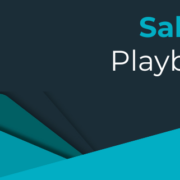Software Sales Career Path Guide
Career Path for Software Salespeople
What do the CEO of Oracle, the founder of Sequoia Capital, and Mark Cuban have in common? All started their careers selling technology.
Software sales is an excellent way to jump-start your career whether or not you plan on working in tech long term. Here are the primary software sales career paths to know and understand:
- SDR to AE
- SDR to SDR Manager
- AE to Sales Management
In this article, we’ll go over traditional and nontraditional career paths that begin with software sales. Then, we’ll detail how much money you can expect to make and give tips on getting where you want.
The Starting Point Is Almost Always The SDR Role
Almost all software salespeople start as Sales Development Representatives (SDRs).
If you’re unfamiliar with the term or position, SDRs don’t actually sell software.
Instead, they help expand the pipeline of Account Executives (AE’s) by cold calling and emailing potential clients. The SDR role prepares a new employee to become an actual salesperson in the following ways:
- SDRs learn to deal with the pressure of having aggressive sales goals in the form of a quota (not for revenue, but meetings set).
- SDRs often have to explain details of the software and its use cases to potential clients in order when a potential client is on the fence about taking a meeting with an AE.
- SDRs have the opportunity to join their AE’s calls (or they should be at a good company) and watch the AE complete demos and execute the sales process.
Think of being an SDR as being an apprentice. Depending on your company, you can expect to be an SDR for 6-24 months before becoming an AE.

How To Get Promoted In Sales
Being an SDR is a grind. The work is monotonous and stressful, and it’s safe to say that you want to get promoted out of this role as quickly as possible.
Here’s how you get promoted:
- Perform well
- Meet and exceed your quota every month
- Do your best to be in the top 20% of your team
- Behave well
- Get along with your teammates and managers
- Come to work on time, and don’t be the first one to leave
- Be optimistic about working hard and set a good example
SDR to Account Executive
Getting promoted from SDR to Account Executive is very straightforward, and most companies should be able to enable you to this role within a reasonable timeframe. However, if your priority is to become an AE as fast as possible, you should, as mentioned earlier, work for a small or medium-sized company that’s growing and that sells to smaller companies. On the other hand, if you don’t mind being patient, join a more established company like Oracle, SalesForce, or Adobe.
AE’s in the SF Bay Area make anywhere from $80,000 to $500,000 annually. For example, the top 20% of performers at Oracle make between $250,000 and $500,000. Medium-sized software companies that service Fortune 1000 companies (NGINX, MuleSoft, LiveRamp) also employ AE’s who earn similar salaries.
Typically people start as an AE selling to small and medium-sized companies. However, you’ll have the chance to sell to large enterprise accounts by performing well.
SDR to SDR Manager
Becoming an SDR Manager depends as much on the employee as it does on the company. Often a company doesn’t need a new SDR manager — if you work for this sort of company, you won’t be able to get this position.
At rapidly growing companies, more SDR managers often need to supervise groups or ”teams” of SDR’s within the general SDR organization. Suppose you join a small startup as an early SDR before there is an SDR manager (and you’re reporting to the Head of Sales or CEO). In that case, you could evolve into the SDR manager if and when there are enough SDRs to merit the position.
This is, again, based on how well you perform and how much respect people at the company have for you based on your performance and behavior.
SDR Managers in the SF Bay Area typically make between $120,000 and $180,000 annually. One could hold this position for life or lead to other management and operations roles. That said, it would be hard for an SDR manager to become a Head of Sales if they have no experience closing deals.

AE to Sales Management
Moving from AE into Sales Management within the SaaS world typically happens one of two ways:
- Being internally promoted
- Joining a small startup as the head of sales
In the first scenario, you’re working for a company that is expanding rapidly (doing well) or has some management turnover due to poor performance (struggling). In the initial scenario, you’re one of the top performers, and you’ve been with the company for a while. However, the sales team is now divided by geography or vertical, and managers are appointed for each category. You’re now responsible for a couple of AE’s and SDRs and are officially in’ ‘sales management.”
In the latter scenario, your company isn’t doing well, so your head of sales is fired or leaves. Given that you’re the top performer, perhaps the CEO will make you responsible for the entire team’s success.
Like moving from SDR to SDR Manager or AE, moving into sales management primarily depends on performance (are you good enough to merit a promotion?) and if the company needs the new role. Moving from sales to sales management is much more complicated than moving from pre-sales to sales.
How Long Do You Have To Be An SDR Before Leveling Up?
We’ve found two primary factors that determine how long you’ll be an SDR before you become an AE:
- First, how large are the companies that your company sells to?
- Enterprise sales are much more complex to execute. For example, if you’re selling to Fortune 1500 companies, you’ll likely take more time to be promoted as your managers will want to train you for as long as possible beforehand.
- How large is the company you work for?
- Larger companies typically take longer to promote, as there is less growth than a startup doubling in size. Therefore there are fewer openings for people to move up to.
Consider MuleSoft and Salesforce. Both companies (currently hiring like crazy) are quite large, and both sell to large companies (Salesforce also sells to small companies). Suppose you browse around on LinkedIn for SDRs and AEs at these companies; it’s clear that it often takes nearly two years of being an SDR before becoming an AE. On the other hand, if you work for a small startup that sells to small businesses, it’s much more likely thatyou’lll move up to a sales role within 6-9 months.

Other Sales Career Paths
Often, salespeople move into marketing or customer success roles if they prefer a less intense” part. So we wrote a complete breakdown of all the various sales roles you could also evolve into.
The skills they learned in making sales for a few years (effective communication, problem-solving for clients, time management) are beneficial for account management. Additionally, exposure to people buying software gives salespeople unique insight into what makes people buy, enabling them to be effective marketers.
Some salespeople succeed at moving beyond the sales floor and into the boardroom. Don Valentine, the godfather of Silicon Valley venture capital, and founder of Sequoia Capital, whose investments have a market cap of $3 trillion, started his career as a technology salesman. He wasn’t selling software (in the 70s, too early for that), but selling semiconductors in that period is comparable to the software of sale today.
There are more examples. As mentioned, Mark Cuban and Mark Hurd (CEO of Oracle) started their careers selling technologies. In addition, Dan Fishback, Board member of several silicon valley companies and former CEO of DemandTec IPO’dd in 2008), started his career as a salesman at Unisys.
So there’s no limit to what you can do when starting your career in software sales. We hope this guide has given you a general overview of the various career paths you can take and what you need to do to get where you want to go.
Ready to start looking for a new job? Start browsing companies!










